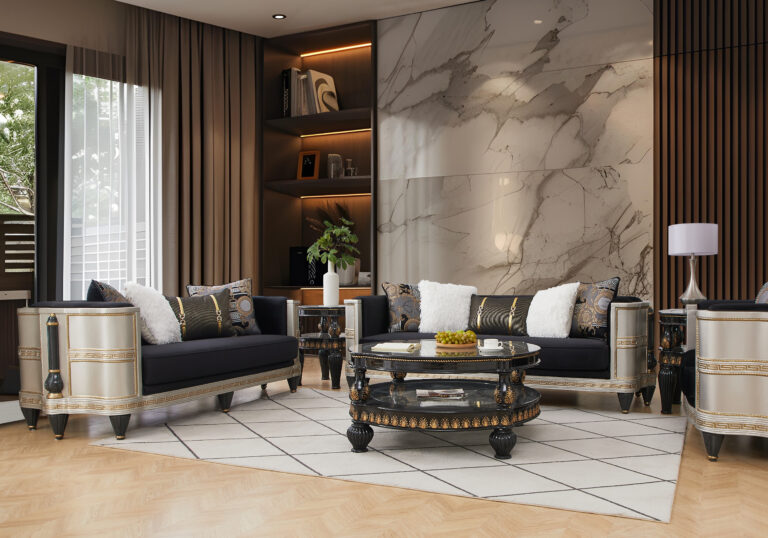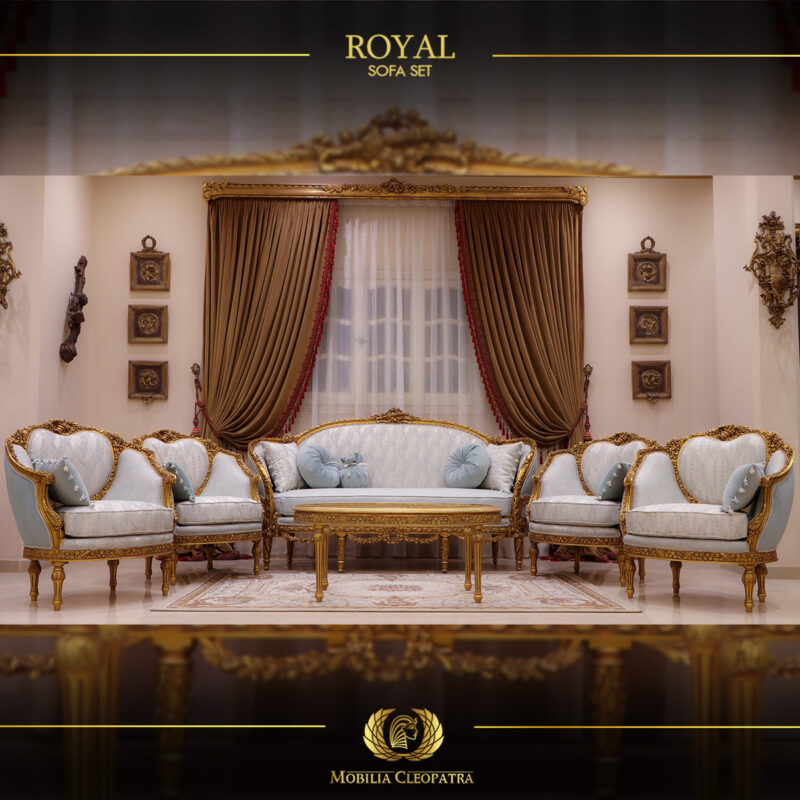Blog
How to Maintain Living Room Furniture Sets

A Living Room Furniture Sets , whether it includes a sofa and loveseat, sectional and ottoman, or couch and armchair is often the centerpiece of your home’s most frequently used space. These furniture pieces are not just functional; they reflect your style, provide comfort, and create the ambiance of your living area. Naturally, Maintain living room furniture sets in pristine condition enhances both your home’s aesthetics and your long-term investment.
Over time, even the most durable furniture begins to show signs of wear and tear. However, with the right maintenance techniques and care habits, you can preserve the appearance and performance of your set for many years to come. In this detailed guide, we’ll cover everything you need to know to protect, clean, and maintain living room furniture sets—regardless of the material or usage frequency.
12 Tips to Maintain Living Room Furniture sets
Maintaining your living room furniture set is essential to preserve its beauty, comfort, and longevity. As the centerpiece of your home’s social space, your furniture is exposed to daily use, dust, spills, and sunlight, all of which can affect its appearance and durability over time. Regular cleaning, proper care for different materials like wood, leather, and fabric, and smart placement to avoid damage from heat or moisture can keep your living room set looking as elegant as the day you bought it. By following a few simple maintenance habits, you can protect your investment and ensure your living room always feels inviting and well-kept.
1. Know Your Materials
The first step to proper furniture care is understanding the materials used in your set. Upholstery, frame construction, and cushion filling all require different care techniques.
Common Upholstery Types:
- Leather: Durable and luxurious but requires special conditioning to prevent cracking and drying.
- Faux Leather (PU/Polyurethane): Affordable and low-maintenance, but more susceptible to peeling over time.
- Fabric (cotton, polyester, microfiber): Comfortable and breathable; often more prone to staining or fading.
- Velvet: Rich and elegant but delicate, requiring gentle vacuuming and minimal moisture exposure.
Frame Materials:
- Hardwood: Sturdy and long-lasting; resistant to warping.
- Metal: Strong and modern but can rust if exposed to excess moisture.
- Engineered wood or particleboard: Cost-effective but more vulnerable to wear over time.
Knowing your materials will help you choose the right cleaning products and methods, avoiding potential damage from incompatible treatments.
2. Establish a Regular Cleaning Routine
Regular cleaning is the key to maintaining your furniture’s fresh appearance and preventing build-up of dirt, dust, allergens, and odors.
Daily and Weekly Cleaning:
- Vacuum upholstery using a soft brush attachment to remove dust, crumbs, and pet hair.
- Wipe down leather surfaces with a damp, soft cloth (microfiber is ideal). Avoid soaking the leather.
- Fluff and rotate cushions to maintain shape and even out wear.
- Clean spills immediately to prevent stains from setting.
Monthly and Seasonal Maintenance:
- Use a fabric or leather cleaner (appropriate to your material) to deep clean upholstery.
- Condition leather with a quality leather conditioner every 3–6 months.
- Spot-treat fabric with an upholstery-safe cleaner or mild detergent solution.
- Check frames and legs for looseness or wobbling—tighten screws as needed.
Creating a simple cleaning schedule (e.g., every Sunday vacuuming, monthly deep cleaning) will help keep your routine consistent and your furniture in excellent shape.

3. Protect from Environmental Damage
Environmental factors like sunlight, moisture, and temperature fluctuations can greatly affect the longevity of your furniture.
Sunlight Exposure:
- UV rays can fade upholstery and dry out leather.
- Position your furniture away from direct sunlight when possible.
- Use UV-filtering window treatments such as blinds, curtains, or window film.
- Rotate cushions and furniture orientation every few months to prevent uneven fading.
Humidity and Moisture:
- Excessive humidity can cause mold and mildew on fabric or warping in wooden frames.
- Use a dehumidifier in high-humidity environments.
- Avoid placing furniture directly against walls or windows that may “sweat.”
- Wipe spills or condensation immediately to prevent water rings or stains.
4. Handle Stains and Spills the Right Way
Accidents happen. Whether it’s wine, coffee, ink, or pet accidents, the way you respond can make all the difference.
General Tips:
- Blot—don’t rub. Rubbing spreads the stain and pushes it deeper into fibers.
- Use a clean white cloth to avoid dye transfer from colored towels.
- Test cleaners on an inconspicuous area before applying widely.
Stain-Specific Solutions:
- Water-based spills: Blot with a cloth and use a small amount of mild soap mixed with water.
- Oil or grease: Sprinkle baking soda or cornstarch to absorb oils before vacuuming.
- Wine or juice: Use a mixture of white vinegar and water; follow with a baking soda paste for stubborn spots.
- Ink stains: Dab with isopropyl alcohol using a cotton swab—avoid over-wetting.
- Pet stains: Use enzyme-based cleaners to break down organic material and eliminate odors.
Always refer to the manufacturer’s cleaning instructions for your specific furniture set when in doubt.
Also check: 3 Piece Living Room Sets
5. Use Furniture Covers and Throws
One of the simplest ways to extend your furniture’s lifespan is to shield it with removable, washable covers or decorative throws.
Benefits:
- Protect against spills, pet hair, and general wear and tear.
- Add seasonal variety to your décor by switching out colors and textures.
- Easily washable, especially helpful for families with kids or pets.
Slipcovers can be custom-fitted or stretch-to-fit and come in a variety of fabrics to match your style.
6. Rotate and Rearrange for Even Wear
When a furniture piece is used more heavily than another, it starts to show signs of aging faster. Avoid this by regularly rotating and rearranging:
Best Practices:
- Switch seating spots between the sofa and loveseat every few weeks.
- Flip and rotate cushions (if reversible) to distribute weight evenly.
- Change the room layout every few months—this helps prevent floor damage and refreshes your space visually.
If the set includes a recliner, alternate reclining seats with static seating to balance the usage.

Maintain Living Room Furniture Sets
7. Use Protective Pads and Supports
Tiny details make a huge difference in the long-term preservation of your furniture.
Protection Essentials:
- Furniture pads under the legs prevent scratches on hardwood or tile floors.
- Armrest covers help shield high-contact areas from wear and oil buildup.
- Cushion inserts or memory foam reinforcements maintain shape in aging furniture.
- Anti-slip pads for cushions that tend to slide, especially on leather or faux leather.
These small accessories help prevent minor wear that eventually leads to major issues.
Also check: 5 Piece Living Room Sets
8. Schedule Professional Cleaning
Even with regular upkeep, professional deep cleaning provides a level of restoration that’s hard to match.
When to Consider It:
- Every 12 to 18 months, or more frequently for high-traffic homes.
- For stubborn stains, fabric odors, or allergens embedded deep in cushions.
- If your set includes delicate materials like velvet, silk blends, or high-end leather.
Professional services can revive tired-looking furniture and often extend the usable life by several years.
9. Store Carefully During Renovations or Moves
If you’re planning to move, renovate, or remodel your home, it’s essential to protect your 2-piece furniture set during transitions.
Safe Storage Tips:
- Cover furniture with breathable cloth covers—avoid plastic which can trap moisture.
- Elevate pieces off the floor using pallets if stored in basements or garages.
- Disassemble parts (like legs or cushions) if possible for easier transport.
- Wrap edges and corners with bubble wrap to prevent damage during handling.
Taking a few extra steps during moves or storage can prevent permanent damage or costly repairs.
Also check: Classic living room furniture sets
10. Mind the Weight Limits
Overloading your furniture—whether by placing heavy items on armrests or allowing too many people to sit simultaneously—can wear down internal components.
Avoid:
- Letting children jump or climb on sofas and loveseats.
- Storing heavy items like books or electronics on armrests.
- Sitting on backrests or edges consistently.
- Placing oversized pets without protective covers.
Respecting weight limits preserves the frame integrity and prevents sagging or warping.
11. Deal with Odors Effectively
Living room furniture can trap odors from cooking, pets, and everyday use. Here’s how to neutralize them:
Odor-Fighting Tactics:
- Baking soda: Sprinkle on fabric furniture and vacuum after 15–20 minutes.
- Fabric refresh sprays: Use non-toxic sprays to freshen up upholstery.
- Activated charcoal sachets: Place behind cushions or under furniture.
- Essential oil diffusers: Natural oils like lavender or eucalyptus freshen the air without saturating the fabric.
Avoid masking smells with heavy chemical sprays. Natural deodorizing methods work best for long-term odor control.
12. Monitor for Pests
Especially for fabric-covered furniture, watch for signs of pests like bed bugs, dust mites, or moths.
Prevention Tips:
- Regular vacuuming discourages dust mites.
- Keep your home dry and clean to avoid mold or mildew.
- For secondhand or inherited furniture, fumigate or steam-clean before bringing it indoors.
- Store furniture in clean, dry conditions—never in damp sheds or garages.
If you spot bugs or larvae, call a professional immediately before the problem worsens.
Also check: How to Maintain Victorian Furniture
Conclusion
Maintain living room furniture sets doesn’t have to be complicated. With just a bit of knowledge, the right tools, and a consistent routine, your furniture can remain as comfortable and attractive as the day you bought it.
Whether your set is upholstered in cozy fabric, sophisticated leather, or plush velvet, implementing a care strategy that includes regular cleaning, environmental protection, and proper use will ensure it stands up to daily life—while continuing to be the stylish focal point of your home.
Furniture is an investment in your comfort and your space. Treat it well, and it will reward you with beauty, function, and relaxation for years to come.

